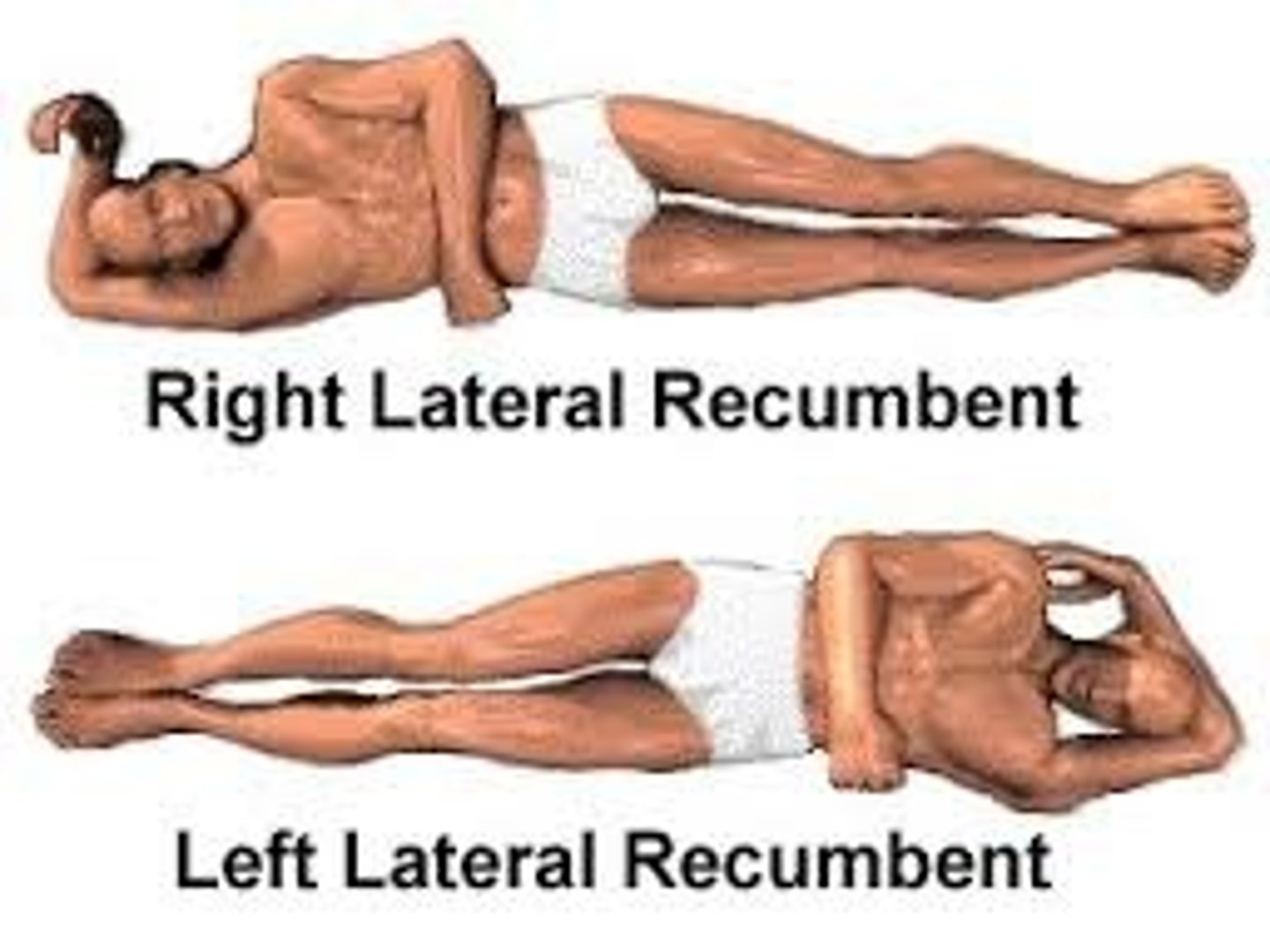Body Positions for Patients
1/11
There's no tags or description
Looks like no tags are added yet.
Name | Mastery | Learn | Test | Matching | Spaced |
|---|
No study sessions yet.
12 Terms
Supine
face-upward position of the body; lying on the back
hands at the sides - patients feet are supported by extending the exam table
used for anything on the anterior or ventral (front) surface of the body (head, chest, stomach) and for certain types of x-rays
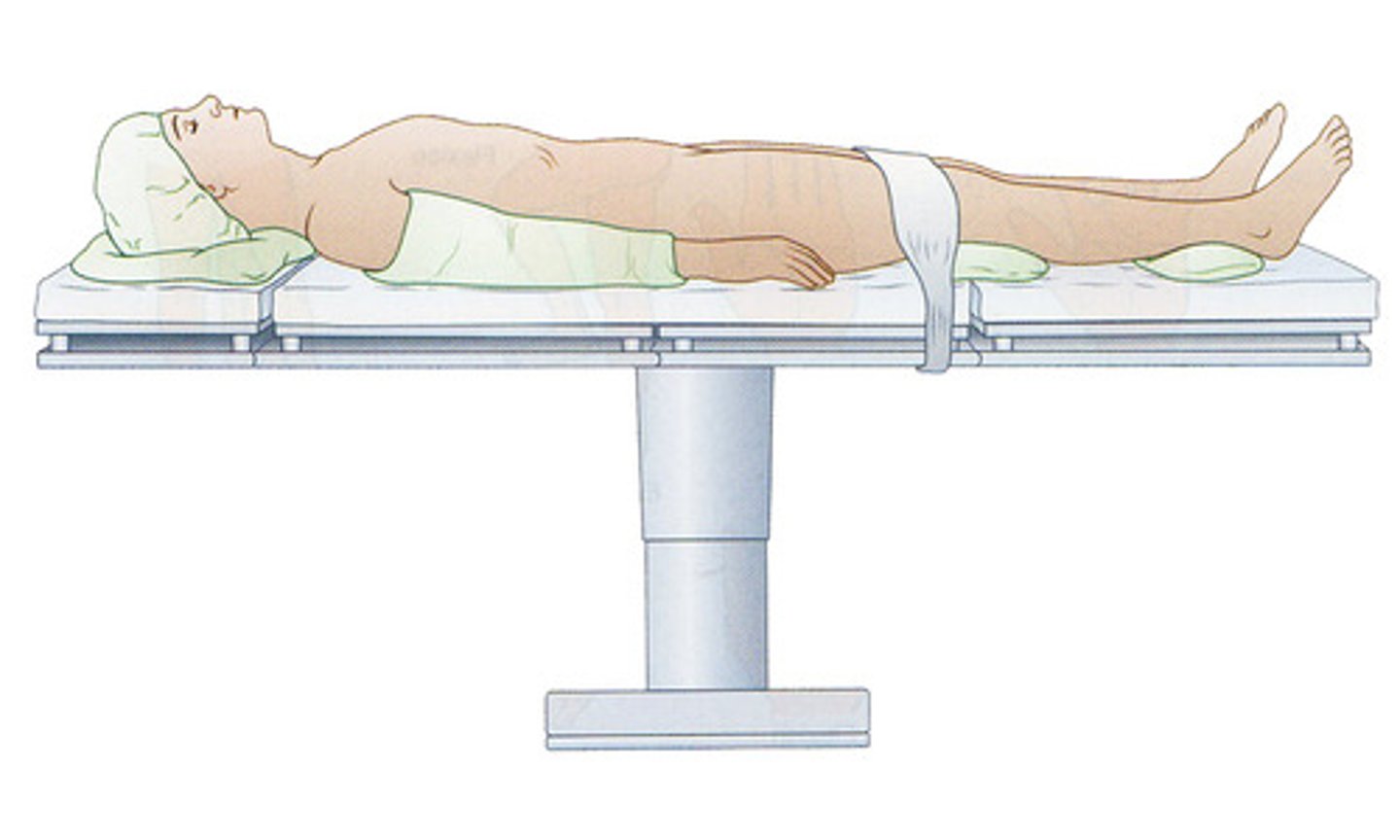
Dorsal Recumbent
pt lying flat on back with knees bent and feet flat on the exam table.
relieves strain on lower back and relaxes abdominal muscles.
used to inspect the head, neck, chest, vaginal, rectal and perineal areas.
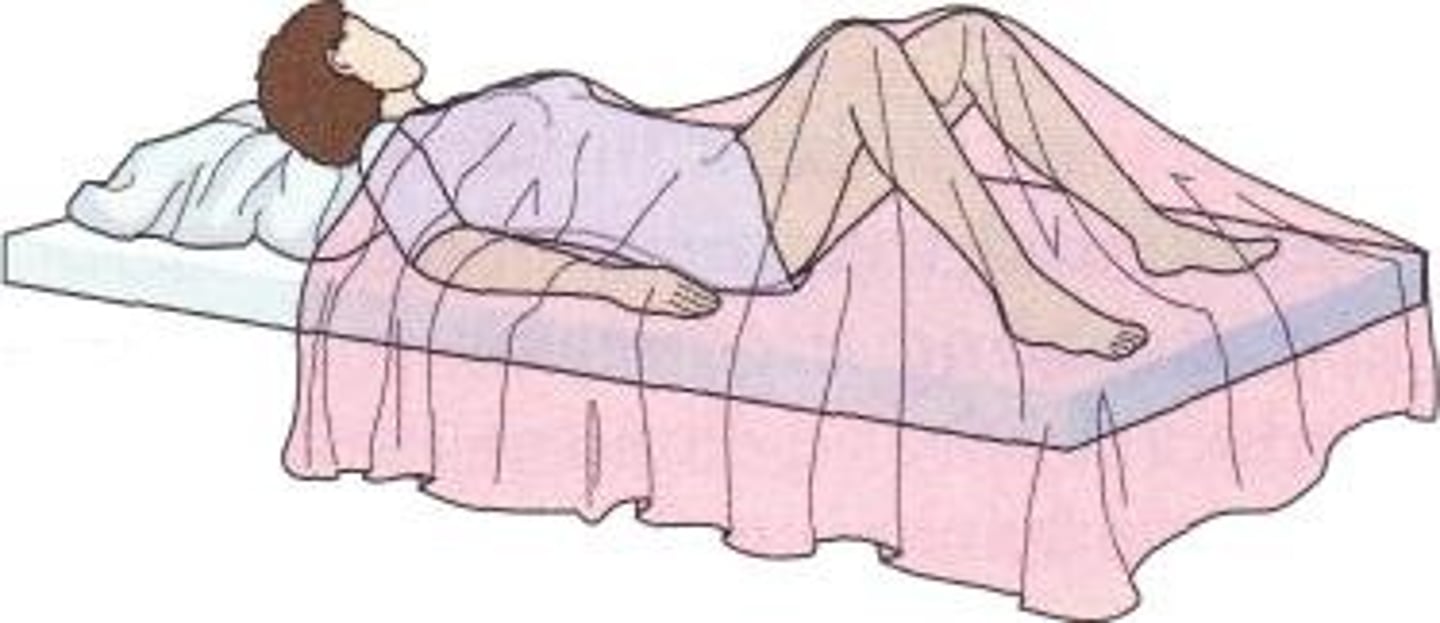
Lithotomy
similar to dorsal recumbent position except patient's feet are placed in stirrups attached to the end and sides of the table.
used for vaginal exams, often requiring the use of a vaginal speculum.
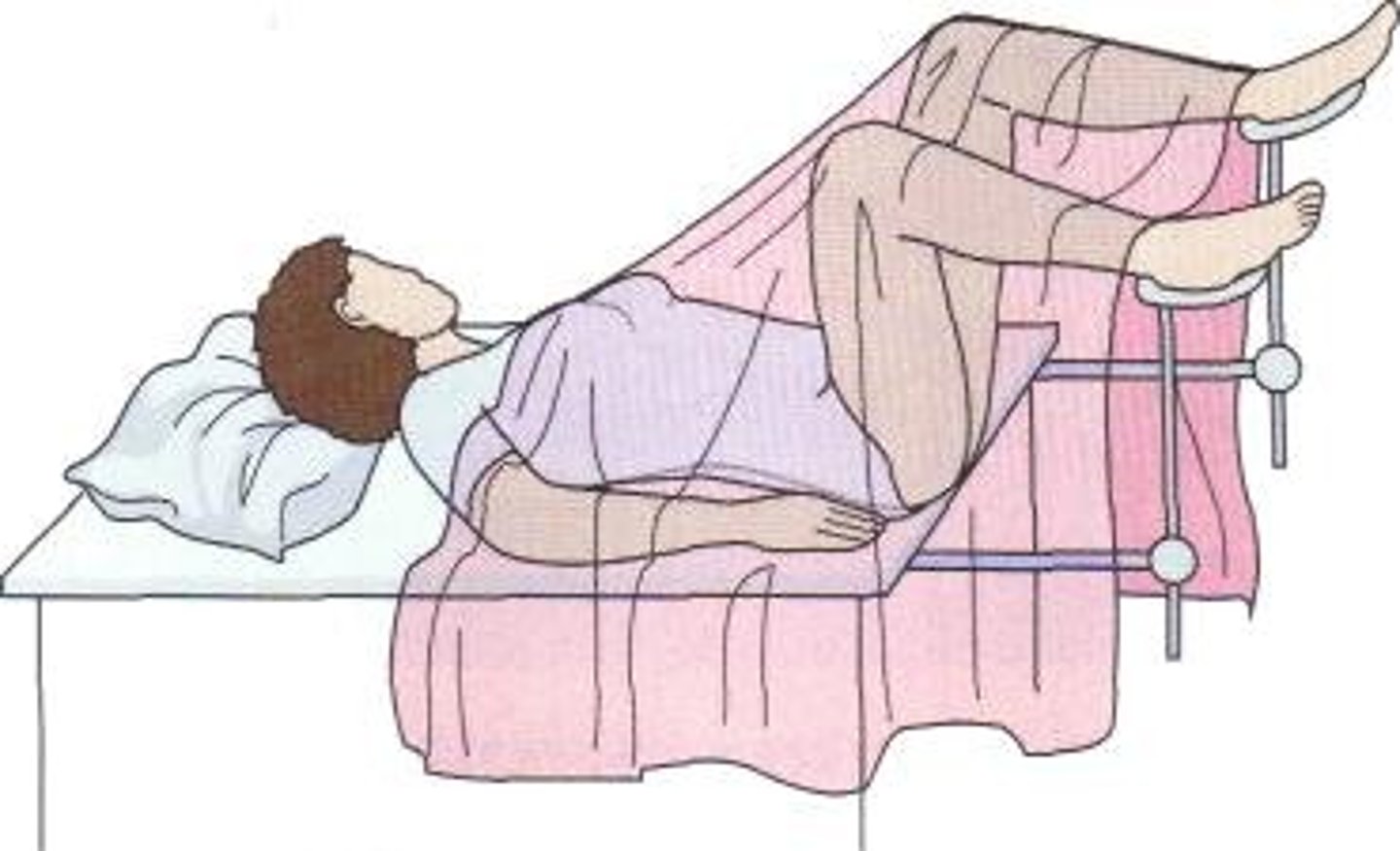
Fowler's
Pt sits on exam table with the head of the table raised to a 90 degree angle.
Used for exams of the head, neck and upper body.
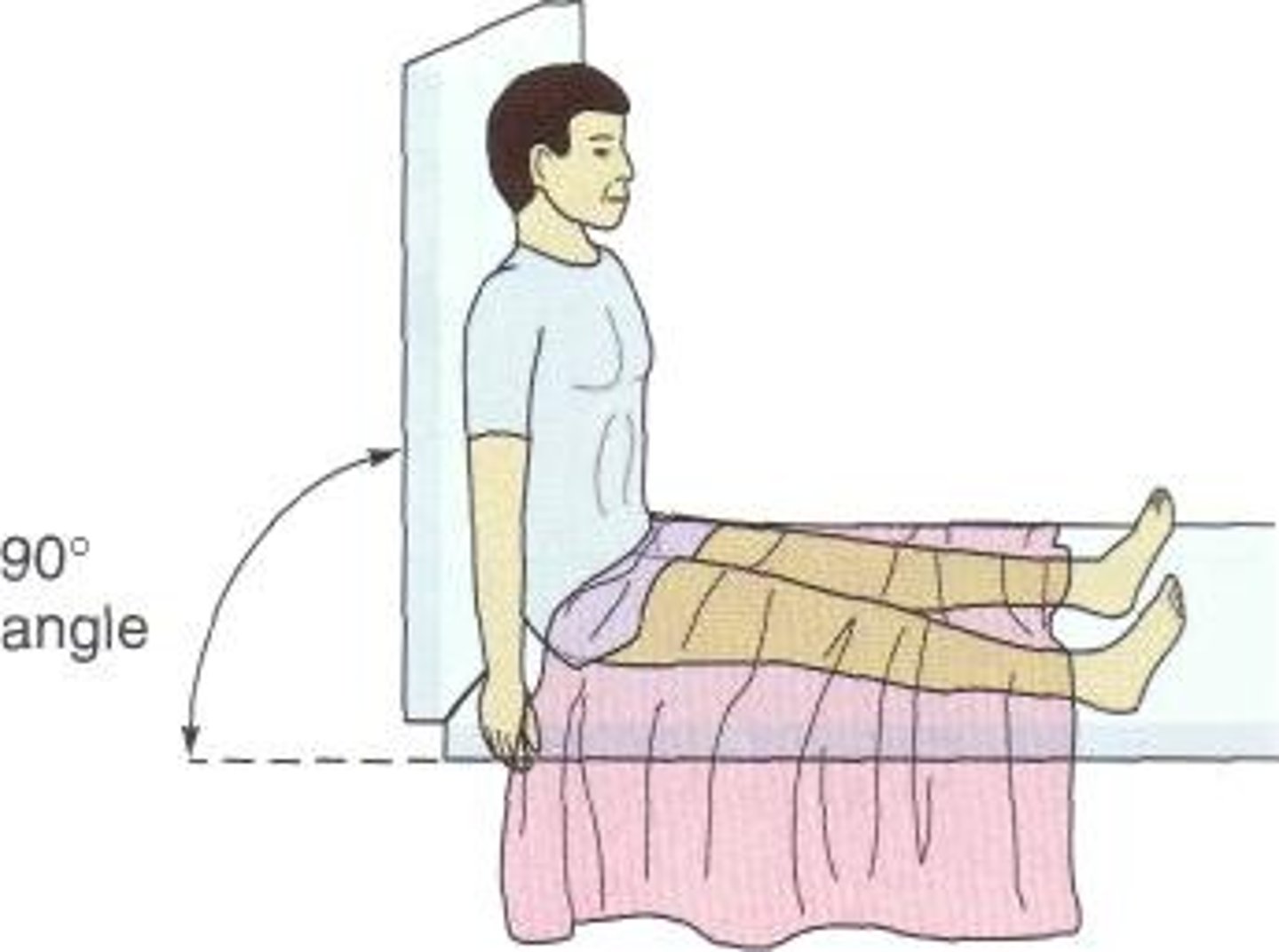
Semi-Fowler's
Head of the table is 45 degree angle instead of a 90 degree.
Used for postsurgical exams and pt with breathing difficulties or lower back injuries.
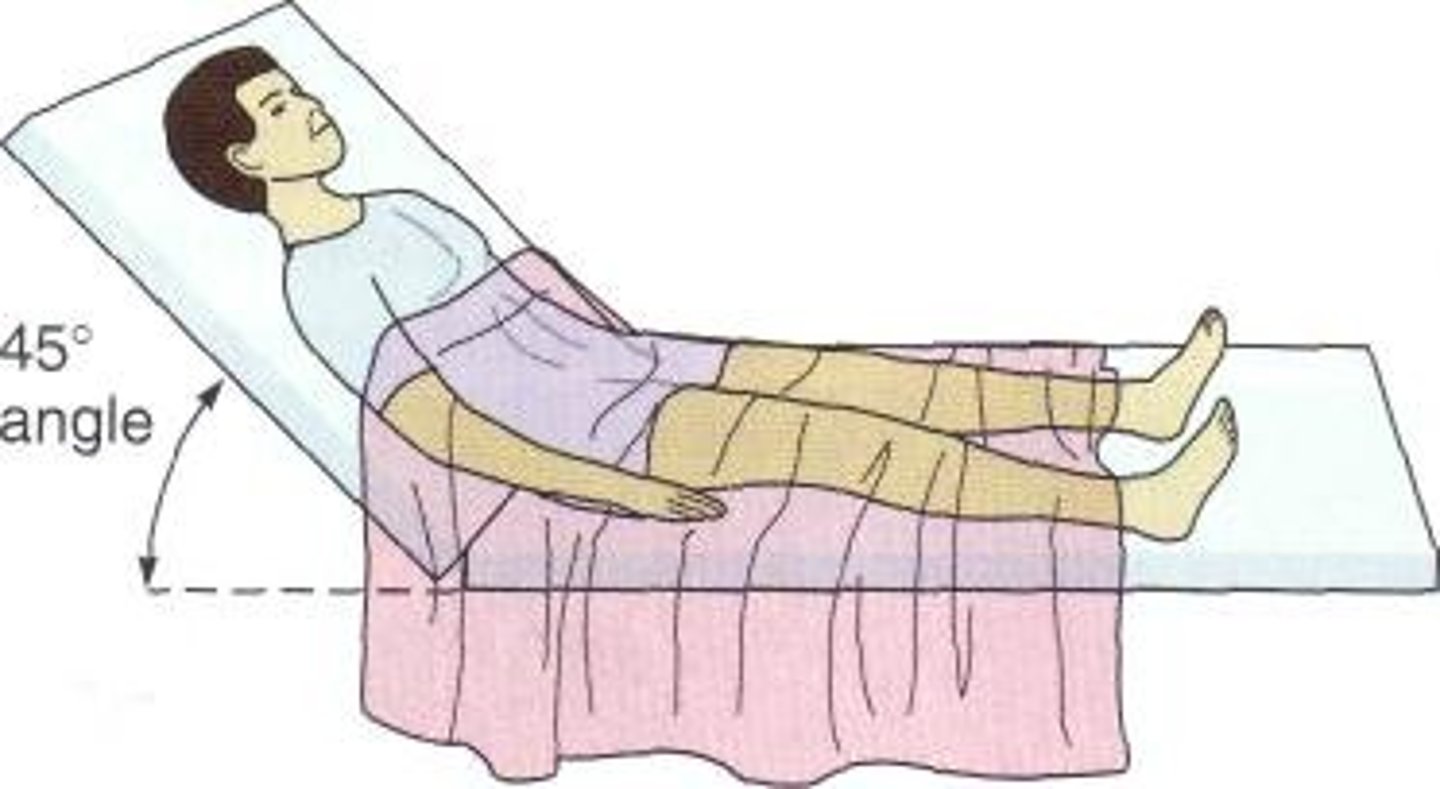
Prone
Pt lying face down, flat on stomach with head turned to the side and arms either along the body or crossed under the head.
Position opposite of supine.
Used for back exams and certain types of surgery.
Should not be used for pt's with breathing problems, women in late-term pregnanies or older adults.
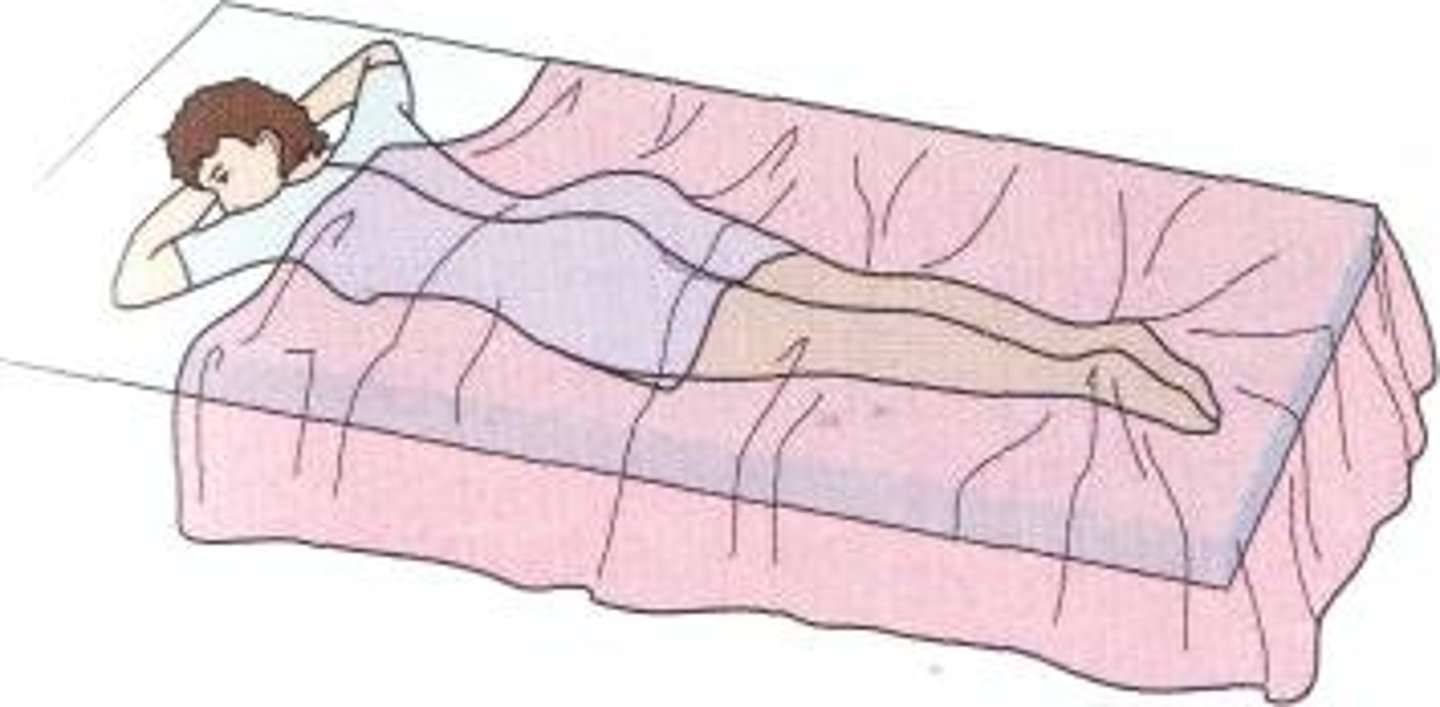
Sims
Pt to be placed on the left side with right leg sharply bent upward and the left leg slightly bent.
The right arm is flexed next to the head for support.
Used for rectal exams, taking rectal temperatures, enemas, and perineal and pelvic exams.
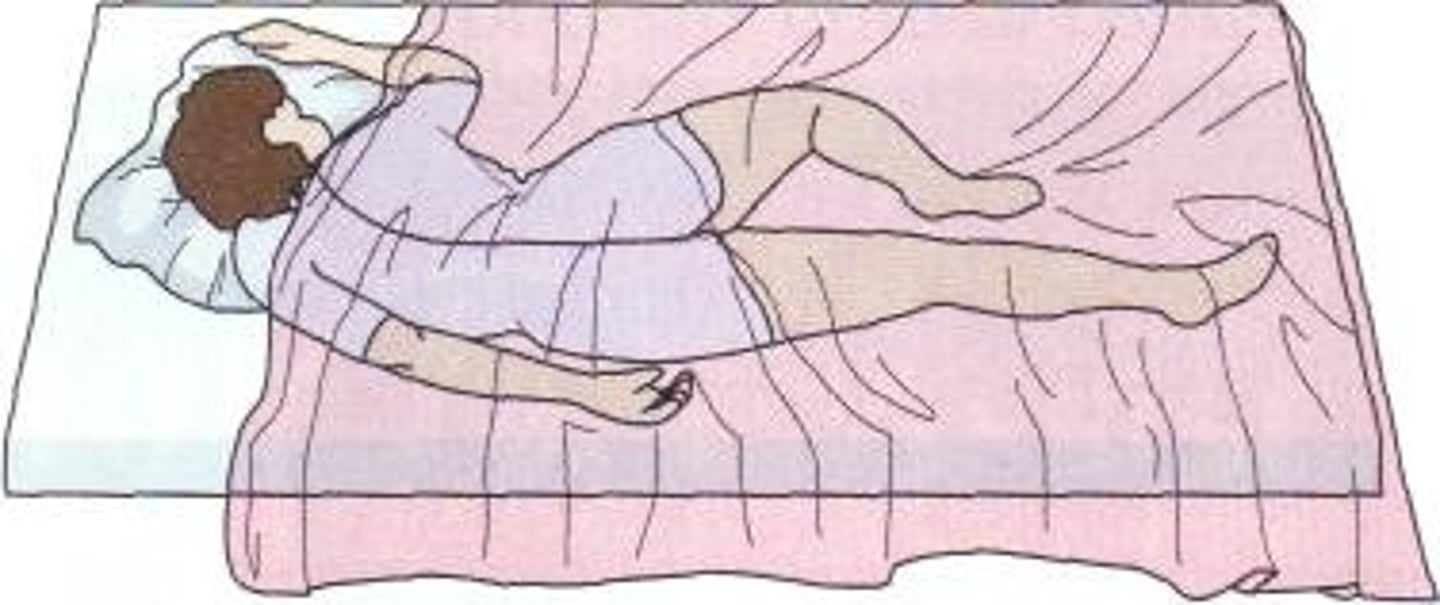
Knee-chest
Pt is placed in the prone position and then asked to pull the knees up to a kneeling position with thighs at a 90 degree angle to the table and buttocks in the air. Head is turned to the side and arms placed under the head on either side for comfort.
Used for proctologic exams, sigmoidoscopy procedures, rectal and vaginal exams.

Trendelenburg
Not normally used in a physician's office except in cases of shock or hypotension.
The pt may be placed in a supine position and the end of the table is raised to a 15 to 30 degree angle. Pt's legs are elevated above the pt's head.
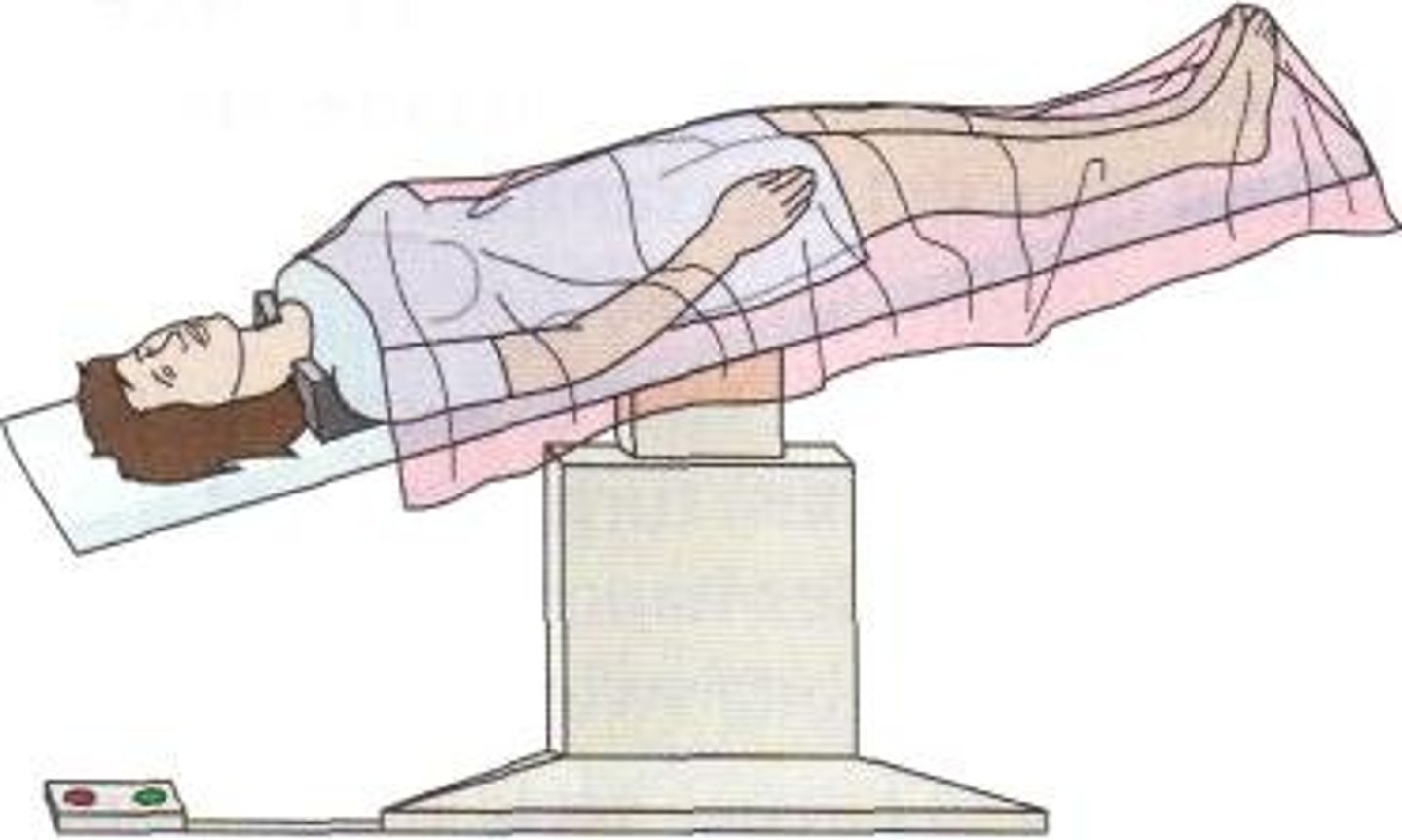
Proctologic
known as jackknife position.
Similar to knee-chest but has a greater bend at the hips. A special exam table is usually available. Pt's lie face down with hips at the hinge of the exam table. table is tipped downward.
Used for proctologic exams such as with a sigmoidoscopy.
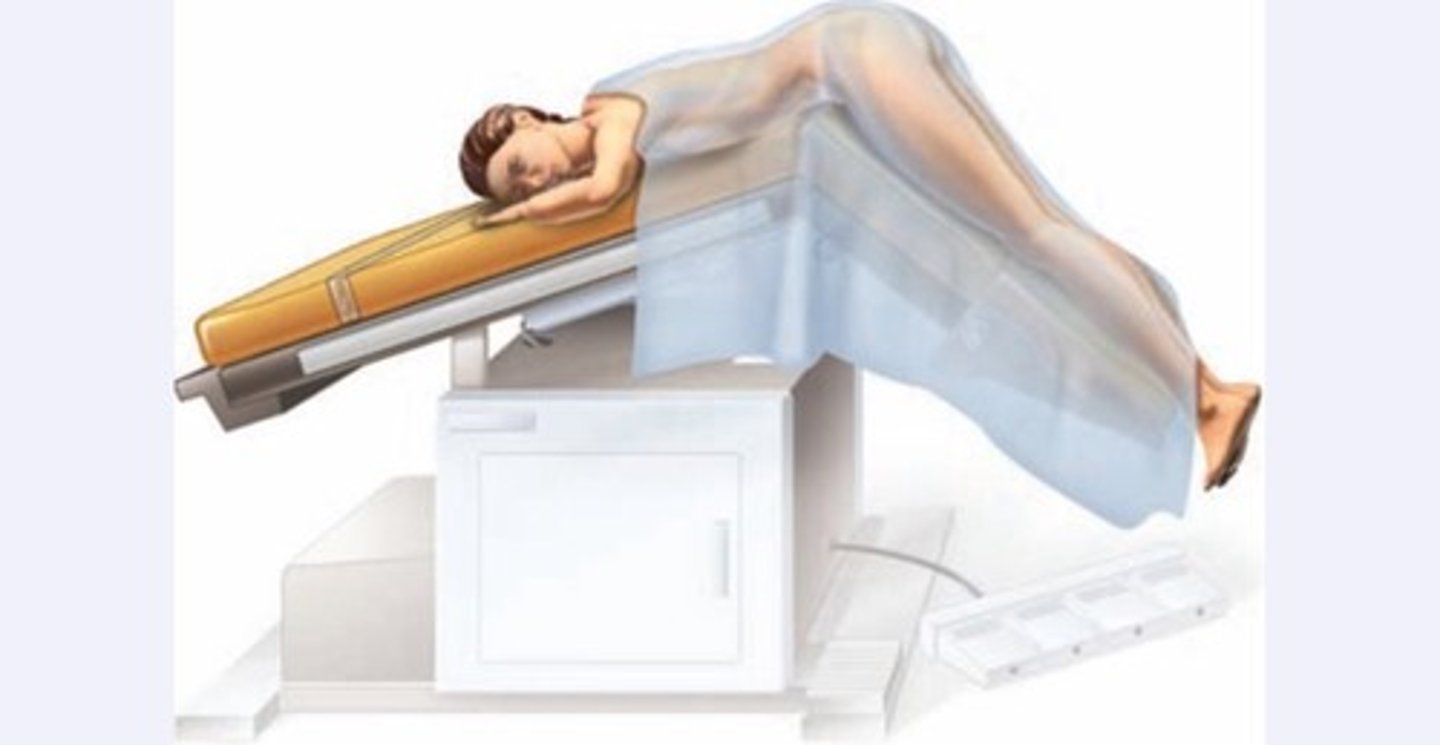
Sitting
Position is used to examine head and chest. Pt sits upright with legs over the side of the exam table. Ideal for pt's with breathing problems and for auscultation of the heart and lungs during the physical exam.
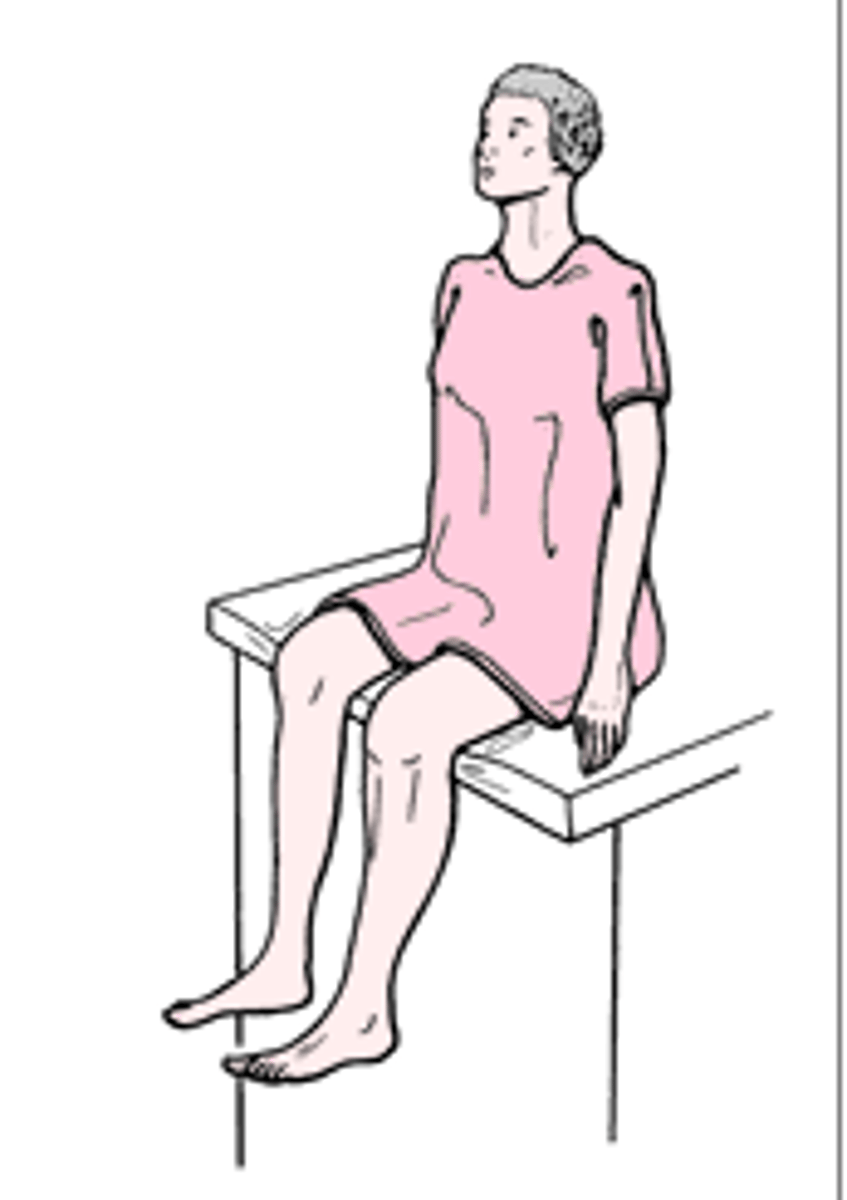
Decubitus
Pt is lying on his side.
A pt lying on the left side would be the left lateral decubitus position. Right side is right lateral decubitus.
Used for x-rays.
